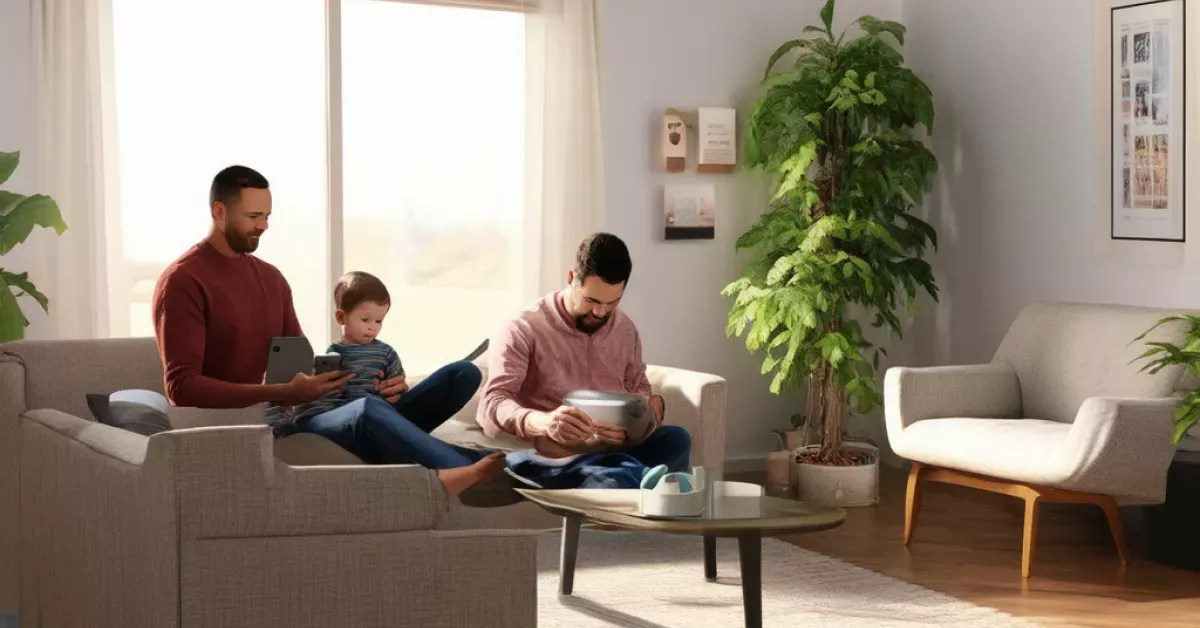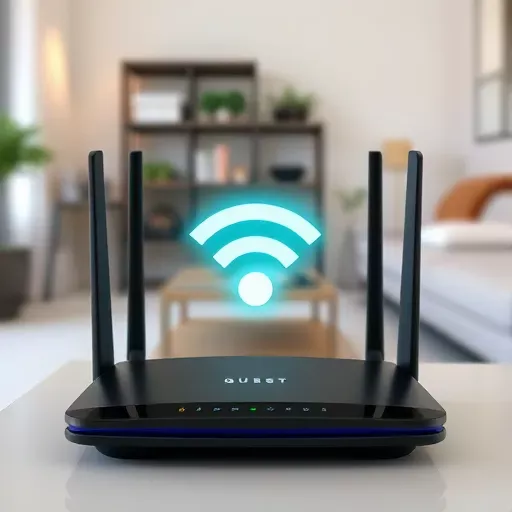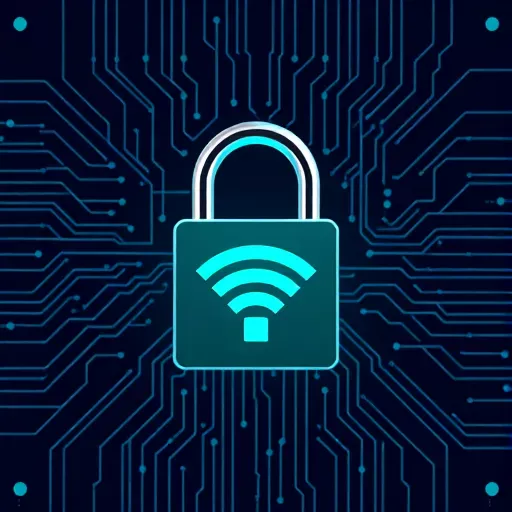Securing your home Wi-Fi is one of the most important steps you can take to protect your personal information and keep online intruders at bay. These days, with the growing number of smart home devices and the increased time we spend online, ensuring your Wi-Fi is locked down is more important than ever. But don’t worry, you don’t need to be a tech wizard to make your Wi-Fi more secure—just a bit of know-how and some practical tips will put you on the right track. Ready to dive in?

Beef Up Your Encryption: WPA2 vs. WPA3
Keeping your Wi-Fi private means keeping it secure from the prying eyes of hackers. That’s where encryption comes into play.
Why Encryption Matters for Your Wi-Fi
Think of encryption like a secret code that keeps your data safe from intruders. When your Wi-Fi is encrypted, it jumbles up the data that travels over your network, so outsiders can’t read it. Without encryption, anyone within range of your Wi-Fi signal could potentially see your online activities. This makes your personal information vulnerable to theft.
Differences Between WPA2 and WPA3
WPA2 and WPA3 are types of Wi-Fi security encryption standards. WPA2 is the older of the two, but it’s still widely used. It provides good security but WPA3 is the new kid on the block, offering improved encryption and better protection, especially for weak passwords. It’s like upgrading from a lock to a high-tech security system.
Choosing the Right Encryption for Your Needs
If your router supports WPA3, that’s the way to go for maximum security. However, if it only offers WPA2, make sure it’s enabled for a baseline level of protection. Just check your router settings—usually under ‘Wireless Security’—to see which options are available.
Change Default Router Logins and SSID Names
This is a simple but crucial step in keeping your Wi-Fi safe from unauthorised access.
Importance of Changing Default Credentials
Routers come with default admin credentials. Leaving them unchanged is like leaving the door to your house wide open. Anyone who knows the default credentials could potentially access your network settings.
Steps to Change Router Login
- Connect to your network and enter your router’s IP address in a browser.
- Log in using the default username and password (usually found on a sticker on the router).
- Head to the ‘Admin’ section in settings and create a strong, unique password.
Picking a Unique SSID Name
Your SSID is the public name of your network. Avoid using anything easily guessed like your street address or family name. Go for something fun but personal, without revealing too much about you, like “KoalaNetwork23”.
Use Guest Networks for Visitors
Let’s chat about why guest networks can be a game changer for home Wi-Fi security.
Benefits of Guest Networks
Setting up a guest network for visitors can keep your main network more secure. It’s like offering a guest room instead of giving them the keys to your house. It helps isolate your primary network, so even if a device on the guest network is compromised, your main devices remain safe.
Setting Up a Guest Network
Most modern routers offer a guest network option in their settings. Simply enable it and create a separate SSID and password. Make sure it’s isolated so guests can’t see shared files or devices on your main network.

Illustration of a router enhancing security via guest networks.
Disable Unnecessary Remote Management Features
Sometimes convenience features can be risky, especially if you’re not keeping a close eye on them.
Risks of Remote Management
Features like remote management let you control your router when you’re away from home. However, they can also open back doors for hackers if left unsecured. It’s best to disable these features unless you really need them.
How to Turn Off Remote Access
Log into your router’s settings, find the remote management section, and simply toggle it off. If you do need it enabled, ensure it’s locked down with strong passwords and two-factor authentication.
Crafting a Strong Wi-Fi Password
The strength of your Wi-Fi security hinges on your password!
Tips for a Strong Password
Here are some golden rules:
- Use at least 12 characters—the longer, the better.
- Mix upper and lower case letters, numbers, and special symbols.
- Create something memorable but random, like “Pineapple!42KoalaJet”.
Common Password Mistakes to Avoid
Keep away from:
- Common words or phrases (like "password" or "123456").
- Your pet’s name or birthday—hackers will try these first.

Visualising the importance of a strong Wi-Fi password for security.
Keeping Network SSID Private: Effective or Not?
Is hiding your network make it more secure? Let’s dig in.
Pros and Cons of Hiding Your SSID
While hiding your SSID can offer a small layer of security by making your network less visible, it’s no replacement for strong passwords and encryption. It may deter casual snoopers, but determined hackers can still find hidden networks.
Steps to Hide Your SSID
Go to your Wi-Fi settings and look for an option to disable SSID broadcasting. Toggle this option to keep your network name under wraps, though connections may be slightly slower.
The Perks of Built-in Firewall Routers
A built-in firewall acts like a security guard for your home network.
Why A Firewall is Essential
Firewalls help filter and block suspicious traffic from entering your network. They’re another layer of protection, making it harder for threats to reach your devices.
Features to Look for in a Secure Router
Look for routers that have:
- Advanced firewalls (like SPI—Stateful Packet Inspection).
- User-friendly settings that allow you to easily configure security levels.
Setting Up Firewall Settings
Log into your router’s dashboard and navigate to the firewall settings. Ensure the firewall is enabled and regularly check the logs for any unusual activity.
The Importance of Regular Firmware Updates
Keeping your router’s firmware up-to-date is like changing the locks on your doors from time to time.
Keeping Your Router’s Firmware Updated
Routers sometimes require updates known as firmware upgrades. These updates often patch security holes and improve performance. Regularly check your manufacturer’s website or your router’s admin panel for the latest updates.
Automating Updates for Hassle-Free Maintenance
Some routers allow you to enable automatic updates. Look for this option in your settings, saving you the hassle of manual checking and ensuring you’re always protected against the latest threats.
Here’s a Quick List to Keep Your Wi-Fi Secure:
- Use strong encryption (WPA3 if possible).
- Change default router logins and SSID.
- Set up a guest network.
- Disable unnecessary remote access.
- Use a robust Wi-Fi password.
- Keep your firmware up to date.
- Enable the router’s firewall.
Avoid These Common Mistakes:
- Using weak or default passwords.
- Leaving your SSID as the default name.
- Ignoring firmware updates.
- Enabling unnecessary remote management.
- Forgetting to set up a guest network.
With these steps, you’ll be on your way to creating a much more secure Wi-Fi environment. Imagine the peace of mind that comes with knowing your home network is buttoned up tighter than a crab’s bottom! So, go ahead, make these tweaks, and enjoy a safer, more secure online experience right in the comfort of your own home. Happy surfing!
